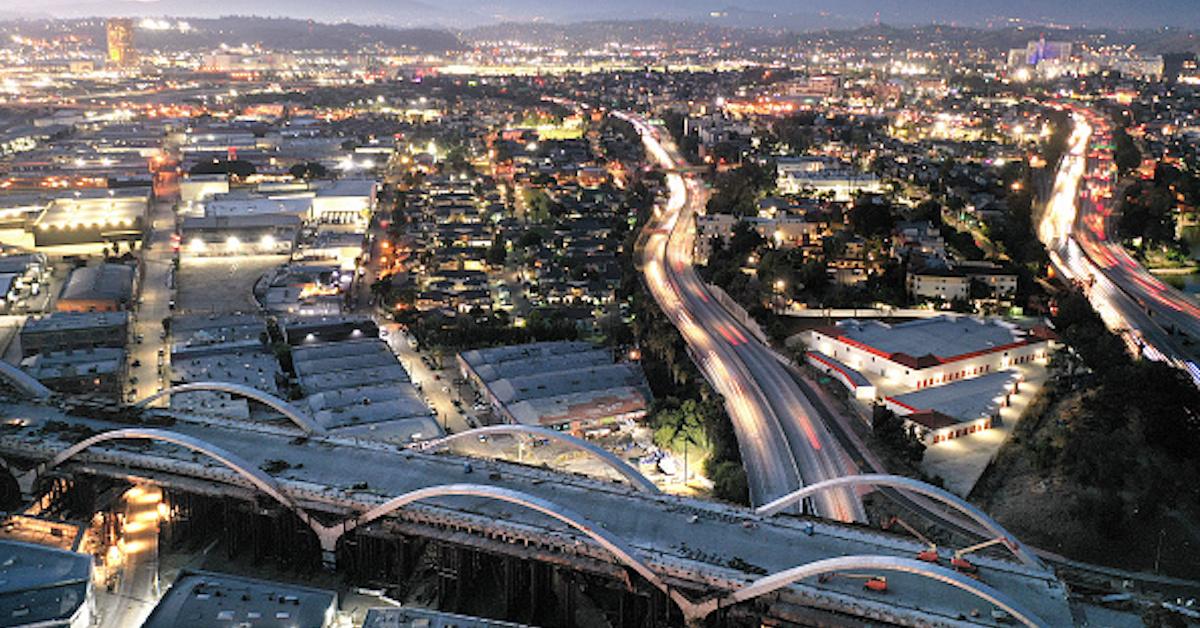What Percentage of Infrastructure Is Privately Owned?
The private sector is a large contributor to national income. But what percentage of infrastructure is privately owned, and why does that matter?
Nov. 10 2021, Published 10:24 a.m. ET

The most crucial part of any society is its infrastructure. It ensures logistical efficiency and economic flow and affects everyone, from the government to your next-door neighbor. What percentage of U.S. infrastructure is owned by the private sector, and why does that matter?
The most basic definition of infrastructure refers to any form of logistical planning for a large-scale system. The word lends itself to two meanings:
“infra” – “below, beneath”
- “structure” – “building, constructing”
These definitions manifest themselves in the form of physical structures such as freeways, airports, and communication networks.
What are the different types of infrastructure ?

Aerial view of a freeway connecting Boyle Heights with Downtown Los Angeles.
Critical infrastructure is any department asset or administrative function. This includes Homeland Security, the Department of Energy, and the Department of Transportation. Tech infrastructure, which includes information technology (IT), is used to collect and transmit data in businesses. Additional infrastructure examples are power grids, WiFi, courts of law, and regulatory bodies.

Who funds what in the private and public sectors
The private sector functions through entities that are free from government control and are privately owned by shareholders. It includes all profit-based businesses. The opposite is the public sector, which comprises state and government entities. It's worth noting that something that can function for the public can be owned or controlled by the government.
Infrastructure investments can be funded by the private or public sector. Whereas public-sector funds come from taxes and tolls, private-sector funds come from private investments. Another funding avenue is public-private partnerships (PPPs), where government and private-sector funds are pooled. This form of funding is typically used to complete large or long-term projects.
When funded through PPPs, partial ownership is provided to all parties involved. Depending on the scale of the project, the private entity may request to receive the profits from the structure, such as the profits from a toll road. While these investments can be beneficial, they can result in public-sector structures being owned by private groups who have little regard for government regulations.
What percentage of infrastructure is owned and controlled by private investors?
In 2011, The Federal Emergency Management Agency (FEMA) reported that 85 percent of the nation's most critical infrastructure is owned by the private sector. This disparity points to an age-old question: What happens when private (for-profit) entities control critical parts of society?
The answer is that profit can quickly take higher priority than public welfare. This is what makes the Biden administration's newly passed $1 trillion infrastructure bill so monumental. Its method of payment comes in the form of various taxes that won't affect anyone making less than $400,000 per year.
